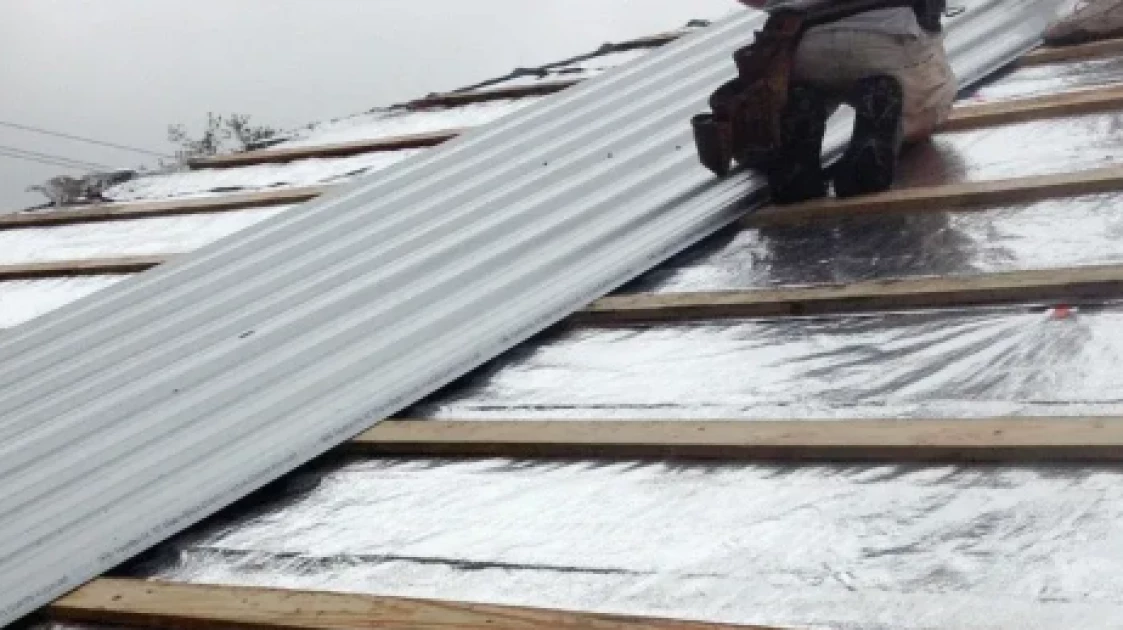sponsored content
How Jumbolene roof insulation is fixing Kenya’s hot and noisy buildings #AD


Audio By Vocalize
The problem is affecting homes, offices, warehouses, schools and even hospitals, and will only worsen as Kenya and the rest of the world continue to experience increasingly unpredictable weather patterns.
Many homes no longer feel like home. Offices too, which are where many spend their productive hours, are hardly ever habitable due to high temperatures during the day, or freezing cold during the night.
Buildings across Kenya are quietly struggling with extreme indoor temperature swings, from Mombasa’s coastal heat to the dry plains of Machakos or the cold nights in Limuru and Nyandarua – a major concern among builders and tenants.
The problem has often been blamed on the use of uninsulated mabati roofs in buildings, making indoors unbearably hot by midday, therefore making it hard to live or work comfortably.
In schools, classrooms often get too hot, especially in the afternoon, making it hard for students to concentrate.
It gets worse in hot counties like Turkana, Garissa, Kitui, Marsabit and Tharaka Nithi, where schools sometimes cancel afternoon classes due to extreme heat.
People generally struggle to stay alert in overheated, poorly ventilated spaces.
Heat damages sensitive items like food, medicine, beverages, and fresh produce—leading to major financial losses.
Often, heat causes discomfort, dehydration, and in severe cases, even fainting - especially in workplaces.
During the rains, mabati roofs get so loud that meetings and classes are disrupted because people can’t hear each other.
On the farms, heat stress lowers milk and egg production in dairy cows and poultry.
Many people have had to turn to fans and air conditioners more often, driving up power costs.
Yet, a simple and highly effective solution remains underutilized in our construction practices, the Jumbolene roof insulation.
Remember grass-thatched houses?
Traditionally, our houses were mud-walled and grass/makuti-thatched, which made them comfortable both during hot days and cold nights.
But when we moved from our traditional way of building using iron sheets for roofing and concrete for walls, we created uncomfortable indoor conditions that make our lives uncomfortable due to heat/cold flow into the buildings.
The natural thatching also cuts off rain noise, making these homes quieter and more serene.
Fast forward to modern times, mabati (iron sheet) roofs dominate most buildings, especially in urban and peri-urban areas. Unfortunately, mabati is a highly conductive material — it transfers heat quickly and releases it just as fast, leading to indoor environments that are uncomfortably hot or cold. These houses also suffer from rain and external noises which easily flow through the roof, causing disturbances.
This shift has led to increased use of fans, air conditioners, and other cooling systems that drive up electricity costs and contribute to carbon emissions.
But it doesn’t have to be this way — Jumbolene Roof Insulation brings back the thermal comfort we once enjoyed, using modern technology.
Jumbolene Roof insulation
Jumbolene Roof insulation is a heat/thermal barrier installed beneath the roofing sheets to reduce heat gain and loss in buildings. It acts as a barrier — cutting off the flow of heat in and out of a building and thus, creating a more comfortable living and working space.
Scientifically, a more comfortable indoor environment increases creativity and productivity.
In addition, iron sheets not only transfer heat but are also notoriously noisy during rainfall.
Installing Jumbolene Roof insulation
At the heart of the solution is Jumbolene Roof Insulation, a reliable and affordable insulation product manufactured locally by Jumbo Chem Kenya. It is specifically designed to suit East African climates and building styles.
Whether you're constructing or renovating, insulating your roof reduces indoor temperatures during hot days, reduces energy bills by cutting down on AC/cooling costs, prevents roof condensation and leak-related damage and improves overall building comfort — making schools more conducive for learning, offices more productive, and homes more liveable.
Jumbolene Roof Insulation is ideal for a wide range of applications, including:
Residential homes – keeping families cool and comfortable.
Offices & commercial buildings – improving staff productivity.
Prefabricated shipping containers, Which are used for shops and as container homes.
Godowns, warehouses & cold rooms – protecting goods from heat damage.
Schools, colleges & universities – offering better learning environments.
Hospitals & pharmaceutical facilities – maintaining temperature control for health safety.
Supermarkets, hotels & clubs – enhancing customer experience and reducing cooling costs.
Food processing plants & storage units – supporting food safety and quality control.
Chicken houses & mushroom farms – stabilizing temperature-sensitive agriculture environments.
Places of worship – ensuring congregants' comfort during services.
Soundproofing solutions
Beyond temperature regulation, insulation plays another important role — soundproofing. In today's world, where noise pollution is becoming more prevalent in urban areas, Jumbolene soundproofing foam significantly reduces noise.
Jumbolene Soundproofing Foam is designed to reduce both airborne and structural noise, making it ideal for:
Office partitioning – ensuring privacy and productivity in shared workspaces.
Recording studios and music rooms – enhancing sound clarity and reducing echo.
Conference facilities – minimising noise disturbance for professional presentations.
Churches and places of worship – maintaining reverence and acoustic quality.
Hotels and Clubs – improving guest comfort and relaxation.
As a soundproofing material, it helps reduce noise transmission via walls, floors, and ceilings, creating quieter environments that enhance comfort and functionality.
By absorbing and dampening sound waves, Jumbolene Soundproofing Foam transforms
How to Install Jumbolene Roof Insulation
Jumbolene roof insulation can be installed in two main ways, depending on the stage of your building:
During Roofing (New Construction): The insulation is laid directly over the trusses or purlins before the iron sheets or roofing material are installed. This ensures full coverage and optimal thermal and acoustic performance from the start.
After Roofing (Existing Buildings): For already roofed buildings, Jumbolene insulation is installed from underneath the roof. It is fixed directly to the trusses or rafters using methods such as screws, strainer wire, or steel straps - depending on the desired finish and roof structure.
This flexibility makes Jumbolene ideal for both new builds and retrofitting projects, helping to reduce heat and rain noise while improving indoor comfort.
The Future of Energy-Efficient Building in Kenya
As the country moves toward sustainable construction and energy-saving solutions, Jumbolene Roof insulation is no longer a luxury — it’s a necessity. It reduces the environmental footprint of buildings, aligns with green building codes, and makes economic sense in the long run.
At Jumbo Chem Kenya, we are proud to support developers, architects, and building owners across Kenya with customized insulation solutions tailored to your project's specific needs.
Don’t let heat or cold compromise your comfort or energy efficiency.


Leave a Comment